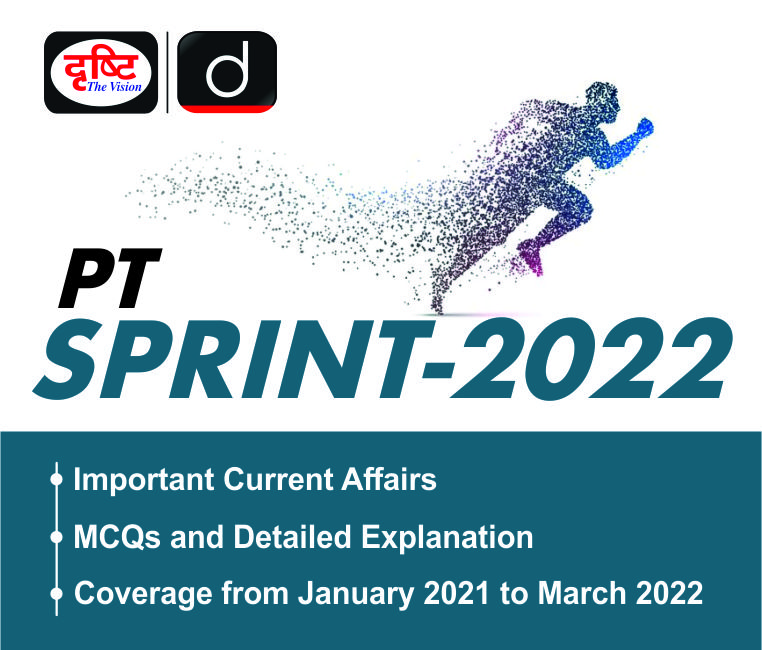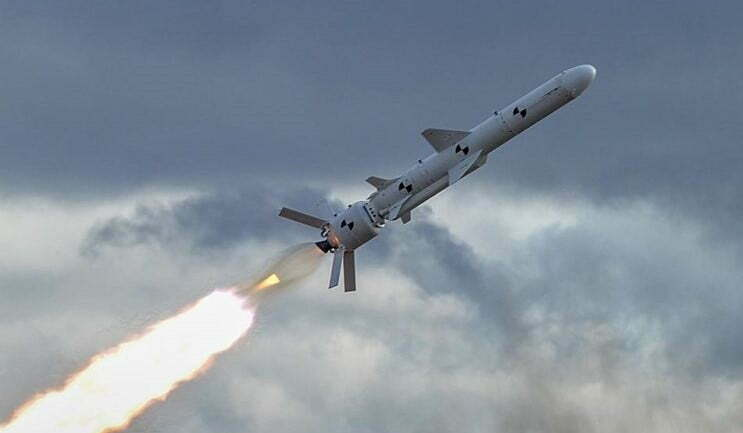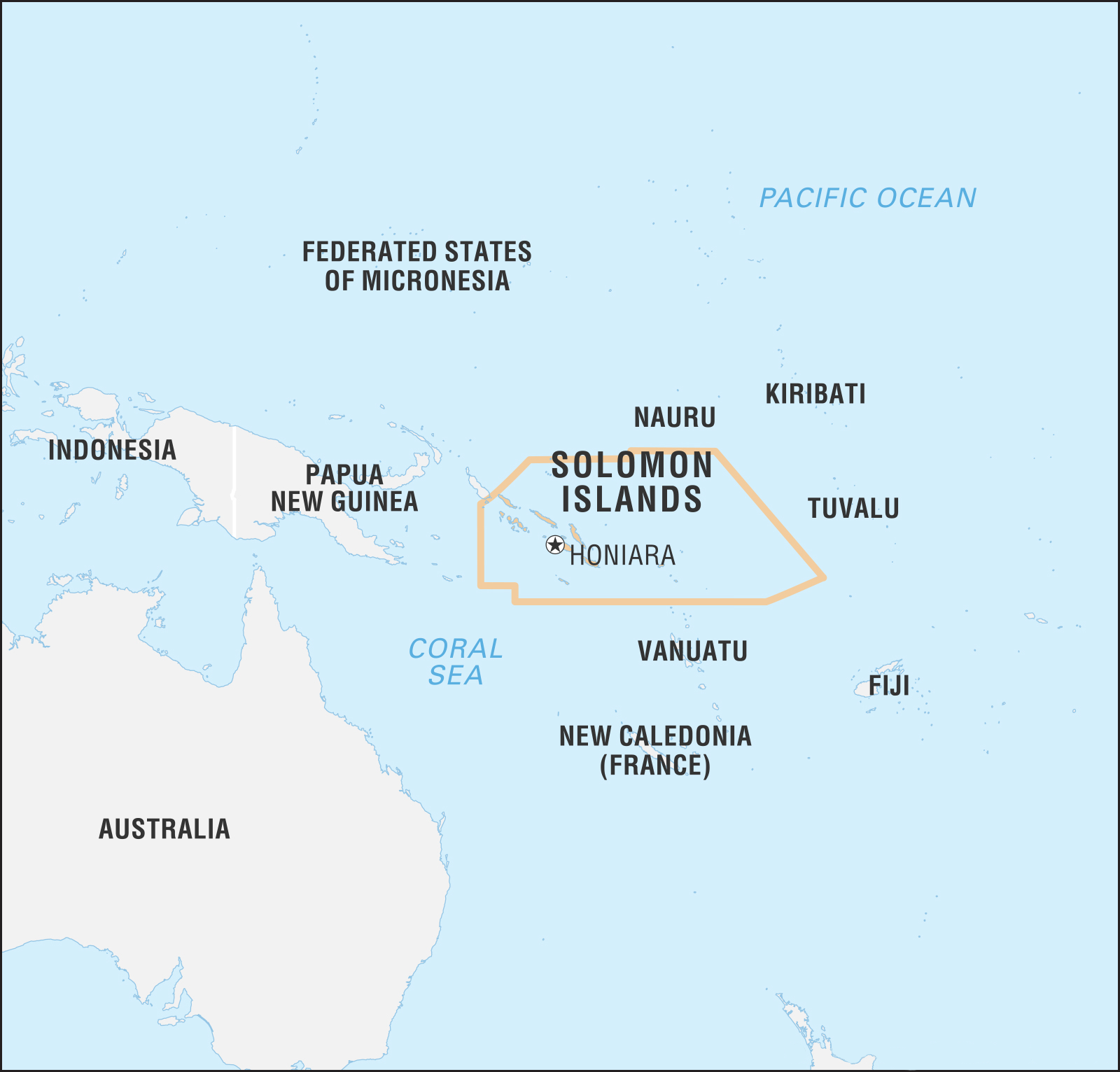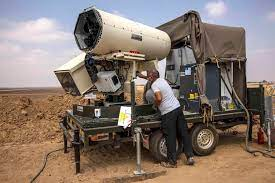International Relations
Security Deal between China and Solomon Island
For Prelims: Location of Solomon Island, AUKUS, Boe Declaration.
For Mains: Security agreement between China and Solomon Island and its Geopolitical Configuration in the region.
Why in News?
A recent leaked document has revealed that the Solomon Islands in the South Pacific has reached a deal with China which outlines an unprecedented level of security cooperation.
- This is the first deal of its kind for China in the region, which is not yet signed and it is not fully known whether the provisions mentioned in the leaked document are present in the final draft.
What are the Key Highlights about Solomon Island?
- The Solomon Islands is part of the ethnically Melanesian group of islands in the Pacific and lies between Papua New Guinea and Vanuatu.
- The islands were initially controlled by the British Empire during the colonial era.
- It went through the hands of Germany and Japan and then back to the U.K., after the Americans took over the islands from the Japanese during World War II.
- The islands became independent in 1978 to become a constitutional monarchy under the British Crown, with a parliamentary system of government.
- Still, the country, a member of the Commonwealth, is independent, and the governor-general is appointed on the advice of the unicameral National Parliament.
What are the Provisions under the Proposed Deal?
- The document explicitly enables China to send its “police, armed police, military personnel and other law enforcement and armed forces” to the islands on the latter government’s request, or if the former sees that the safety of its projects and personnel in the islands are at risk.
- It also provides for China’s naval vessels to utilise the islands for logistics support.
What are the Reasons for China’s Interest in the Solomon Islands?
- Role of Taiwan:
- The Pacific islands are among the few regions in the world where China has competition from Taiwan for diplomatic recognition.
- China considers Taiwan to be a renegade territory awaiting reunification, and opposes its recognition as an independent state on the international stage.
- Hence, any country which has to officially establish relations with China will have to break diplomatic ties with Taiwan.
- The Solomon Islands was one among the six Pacific island states which had official bilateral relations with Taiwan.
- However, in 2019, the Solomon Islands, along with Kiribati, switched allegiance to China. Now, only four regional countries backing Taiwan, mostly belonging to the Micronesian group of islands which are under the control of the US.
- The Pacific islands are among the few regions in the world where China has competition from Taiwan for diplomatic recognition.
- Potential Vote Banks for Mobilising Support:
- The small Pacific island states act as potential vote banks for mobilising support for the great powers in international fora like the United Nations.
- Presence of Large Maritime Exclusive Economic Zones:
- These Pacific island states have disproportionately large maritime Exclusive Economic Zones when compared to their small sizes.
- Presence of Reserves of Timber and Mineral Resources:
- Solomon Island in particular has significant reserves of timber and mineral resources, along with fisheries.
- Strategic Significance:
- The islands in the Pacific are strategically located for China to insert itself between America’s military bases in the Pacific islands and Australia.
- This is especially significant in the current scenario, given the emergence of the AUKUS (Australia, the UK and the US) which seeks to elevate Australia’s strategic capabilities vis-à-vis China through Anglo-American cooperation.
- The islands in the Pacific are strategically located for China to insert itself between America’s military bases in the Pacific islands and Australia.
What are the Implications for Geopolitical Configuration in the Region?
- All Pacific countries have a stake in protecting the stability and security of the region.
- Pacific Islands Forum members, including Australia, agreed in the 2018 Boe Declaration to address regional security challenges collectively.
- A bilateral agreement such as the one proposed between China and Solomon Islands undermines that sentiment and shows a limited appreciation for the security of the region as a whole.
- Earlier, the US announced plans to open an embassy in the Solomon Islands, laying out in unusually blunt terms a plan to increase its influence in the South Pacific nation before China becomes “strongly embedded”.
- The smaller island nations of the region are heavily dependent on them, especially Australia as it is a resident power.
- This established power structure in the region is being increasingly challenged by China through the steady displacement of Taiwan and the cultivation of economic and political clout.
- The geopolitics of the region is undergoing an unprecedented flux in tandem with the larger shifts in the Indo-Pacific, suggesting an intensification of regional great power rivalry and domestic volatility for the Pacific island states in the coming years.


Social Justice
Human Rights Report on India 2021: US
For Prelims: Human Rights Report on India 2021, Universal Declaration of Human Rights, Fundamental Rights, DPSP, National Human Rights Commission.
For Mains: Human Rights and Human Rights Related Provisions In India, Current Scenario of Human Rights in India.
Why in News?
Recently, the US State Department released a strong and critical report on human rights in India in 2021.
- The report is submitted each year to the US Congress which is retrospective and contains a country-wise discussion of the state of internationally recognised individual, civil, political and worker rights, as set forth in the Universal Declaration of Human Rights and other international agreements.
- In December 2021, data related to human rights violations in states was provided by the Ministry of Home Affairs in Rajya sabha.
What are the Key Highlights of the Report?
- Arbitrary Arrest and Detention:
- Indian law “prohibits arbitrary arrest and detention but both occurred during the year”, with police using “special security laws to postpone judicial reviews of arrests”.
- Pretrial detention was arbitrary and lengthy, sometimes exceeding the duration of the sentence given to those convicted.
- Violations of Privacy:
- Citing media reports on journalists being targeted for surveillance through the Pegasus malware, the report flagged violations of privacy by government authorities, “including the use of technology to arbitrarily or unlawfully surveil or interfere with the privacy of individuals”.
- Curbs on Free Expression and Media:
- The report highlighted instances in which the government or actors considered close to the government allegedly pressured or harassed media outlets critical of the government, including through online trolling.
- It detailed the government’s order of February, 2021 directing Twitter to block accounts of journalists covering protests against the three (later repealed) farm laws.
- On Freedom of Association:
- The report highlighted the cases of Amnesty International India, whose assets were frozen by the Enforcement Directorate, and the suspension of the Foreign Contribution (Regulation) Act (FCRA) license of Commonwealth Human Rights Initiative (CHRI) for alleged violations.
What are Human Rights?
- About:
- These are rights inherent to all human beings, regardless of race, sex, nationality, ethnicity, language, religion, or any other status.
- These include the right to life and liberty, freedom from slavery and torture, freedom of opinion and expression, the right to work and education, and many more.
- Nelson Mandela had stated ‘To deny people their human rights is to challenge their very humanity’.
- Human Rights Related Provisions in India:
- Enunciated in the Constitution:
- Fundamental Rights: Articles 12 to 35 of the Constitution. These include the Right to Equality, Right to Freedom, Right Against Exploitation, Right to Freedom of Religion, Cultural & Educational Rights, Saving of Certain Laws and Right to Constitutional Remedies.
- Directive Principles of State Policy: Article 36 to 51 of the Constitution. These include 'right to social security, right to work, to free choice of employment, and protection against unemployment, right to equal pay for equal work, right to existence worthy of human dignity, right to free & compulsory education, equal justice & free legal aid and the principles of policy to be followed by the State.
- Statutory Provisions:
- Protection of Human Rights Act (PHRA), 1993 (as amended in 2019) provided for the constitution of a National Human Rights Commission at the Union level, which steers State Human Rights Commission in States and Human Rights Courts for better protection of Human Rights and for matters connected therewith or incidental thereto.
- Section 2(1)(d) of the PHRA defines Human Rights as the rights relating to life, liberty, equality and dignity of the individual guaranteed by the Constitution or embodied in the International Covenants and enforceable by courts in India.
- Protection of Human Rights Act (PHRA), 1993 (as amended in 2019) provided for the constitution of a National Human Rights Commission at the Union level, which steers State Human Rights Commission in States and Human Rights Courts for better protection of Human Rights and for matters connected therewith or incidental thereto.
- India took an active part in drafting of the Universal Declaration of Human Rights (UDHR).
- These 30 rights and freedoms include civil and political rights, like the right to life, liberty, free speech and privacy and economic, social and cultural rights, like the right to social security, health and education, etc.
- Enunciated in the Constitution:
UPSC Civil Services Examination, Previous Year Questions (PYQs)
Q. Other than the Fundamental Rights, which of the following parts of the Constitution of India reflect/ reflects the principles and provisions of the Universal Declaration of Human Rights (1948)? (2020)
- Preamble
- Directive Principles of State Policy
- Fundamental Duties
Select the correct answer using the code given below:
(a) 1 and 2 only
(b) 2 only
(c) 1 and 3 only
(d) 1, 2 and 3
Ans: (d)
- The Universal Declaration of Human Rights (UDHR), adopted and proclaimed by the United Nations General Assembly (UNGA) in 1948, establishes the equality and dignity of every human being and stipulates that every Government has a core duty to enable all people to enjoy all their inalienable rights and freedoms.
- Preamble: The objectives of Preamble such as Justice (social, economic, and political), Equality and Liberty also reflect the principles of UDHR.
- Directive Principles of State Policy (DPSP): Provided under Articles 36 to 51, DPSPs are the principles that aim at providing social and economic justice and set the path towards the welfare state. These DPSP act as obligation on state and are in consonance with human rights. Some of the DPSP that are in sync with human rights are as follows:
- Article 38: Promoting the welfare state.
- Article 39: Minimizing inequalities.
- Article 39A: Free legal aid.
- Article 41: Supporting vulnerable sections of society like unemployed, sick, disabled and old age persons.
- Article 43: Securing living wage.
- Fundamental Duties (Article 51A): These are basically civic and moral obligations of all citizens of India. As of now, there are 11 fundamental duties in India, which are written in Part IV A of the Constitution. Article 51A (k) talks about providing opportunities for education to the child between the age of 6 and 14 years by the parents or guardian. This aspect somehow relates to ensuring dignity.


Governance
Modernisation of Prisons Project
For Prelims: Modernisation of Prisons Project, Modernization of Prison Scheme, NALSA, E-Prison and other related Schemes, Grant in Aid.
For Mains: Issues Arising Out of Design & Implementation of Policies, Modernisation of Prisons Project and its Significance.
Why in News?
Recently, the Ministry of Home Affairs (MHA) has issued guidelines to states and Union Territories asking them to Modernize Prisons under the Modernisation of Prisons Project.
What is the Need of Modernisation of Prisons Project?
- They are Important Part of Justice System:
- Prisons are an important and integral part of the Criminal Justice System of the country.
- They not only play the critical role in keeping the offenders in custodial segregation but also help in the process of their reformation and reintegration with the society through various correctional programmes in the Jails.
- Indian Prisons Face three Long-Standing Structural Constraints:
- Overcrowding,
- Understaffing and underfunding and
- Violent clashes.
What is the Modernisation of Prisons Project?
- About: The Government of India has decided to provide financial assistance to States and UTs, through the Project for using modern-day security equipment in Prisons for:
- Enhancing the security of jails.
- To facilitate the task of reformation and rehabilitation of prisoners through correctional administration programmes.
- Duration: The duration of the project is for five years - 2021-26.
- Grant: The Central Government will provide Grant in aid to States and UTs for implementation of the project.
- Grants-in-aid are payments in the nature of assistance, donations or contributions made by one government to another government, body, institution or individual.
- Implementation Strategy: MHA shall provide funds to States/UTs depending upon the number of prisons in a State/UT, number of prison inmates, jail staff, etc.
- The proposal of funding will be decided by the Steering Committee constituted for implementation of the modernization of prisons project.
- Coverage: The project will cover all States and Union Territories and shall broadly cover the following prison types- Central Jails, District Jails, Sub-Jails, Women Jails, Open Jails, Special Jails etc.
What are the Objectives of the Scheme?
- Filling the existing gaps in security infrastructure of jails.
- Providing new security equipment to jails in line with modern day technologies.
- Strengthening the jail security system through security equipment like Door Frame/ Metal Detectors/ Security Poles, Baggage Scanners/ Frisking/ Search/ Jamming Solutions etc.
- Focus on correctional administration, which includes bringing attitudinal change in the mindset of prison officials handling inmates through extensive training and by introducing appropriate programs for inmates for their skill development and rehabilitation, including engagement of trained correctional experts, behavioural experts, psychologists, etc.
What are other Related Initiatives of the Government?
- Modernization of Prisons scheme: The scheme for modernisation of prisons was launched in 2002-03 with the objective of improving the condition of prisons, prisoners and prison personnel.
- E-Prisons Project: The E-Prisons project aims to introduce efficiency in prison management through digitization.
- Model Prison Manual 2016: The manual provides detailed information about the legal services (including free services) available to prison inmates.
- National Legal Services Authority (NALSA ): It was constituted under the Legal Services Authorities Act, 1987 which came into force on 9th November, 1995 to establish a nationwide uniform network for providing free and competent legal services to the weaker sections of the society.


Geography
India to Receive Normal Monsoon: IMD
For Prelims: IMD, Southwest Monsoon, Long Range Forecast, El Nino, La Nina, Drought.
For Mains: Monsoon and its importance, Changing pattern of monsoon.
Why in News?
Recently, the India Meteorological Department (IMD) released its first Long Range Forecast (LRF) for 2022 which says that the country is likely to receive a normal monsoon for the fourth consecutive year.
- While forecasting a ‘normal’ southwest monsoon for this year, IMD also revised downwards the definition of what constitutes average rainfall.
- Every year, the IMD issues a two-stage forecast: the first one in April and the second one in the last week of May, which is a more detailed forecast and also illustrates how the monsoon will spread over the country.
What is the India Meteorological Department (IMD)?
- IMD was established in 1875.
- It is an agency of the Ministry of Earth Sciences.
- It is the principal agency responsible for meteorological observations, weather forecasting and seismology.
What are the Key Highlights of the Forecast?
- India will get Normal Monsoon:
- India would get 99% of the Long Period Average (LPA) rainfall — changed from 89 cm to 88 cm in 2018, and in the periodic update in 2022, again revised to 87 cm.
- A monsoon is considered “normal” when rainfall falls between 96% and 104% of the LPA.
- India would get 99% of the Long Period Average (LPA) rainfall — changed from 89 cm to 88 cm in 2018, and in the periodic update in 2022, again revised to 87 cm.
- EL Nino not Expected:
- The IMD does not expect an El Nino but currently La Nina conditions are prevailing over the equatorial Pacific which will continue during the monsoon.
- El Nino is a phenomenon associated with a warming of the Central Pacific and drying up of the rains over northwest India, the coming monsoon.
- La Nina events represent periods of below-average sea surface temperatures across the east-central Equatorial Pacific.
- It is indicated by sea-surface temperature decreased by more than 0.9℉ for at least five successive three-month seasons.
- The IMD does not expect an El Nino but currently La Nina conditions are prevailing over the equatorial Pacific which will continue during the monsoon.
- “Normal” to “above Normal” Rainfall:
- Current indications suggest “normal” to “above normal” rainfall in the northern parts of peninsular India, central India and the Himalayan foothills.
- Many parts of northeast India and southern parts of South India are expected to see a subdued monsoon.
What is the Long Period Average (LPA)?
- According to the IMD, the “LPA of rainfall is the rainfall recorded over a particular region for a given interval (like month or season) averaged over a long period like 30 years, 50 years, etc”.
- The IMD predicts a “normal”, “below normal”, or “above normal” monsoon in relation to a benchmark “Long Period Average” (LPA).
- The IMD has in the past calculated the LPA at 88 cm for the 1961-2010 period, and at 89 cm for the 1951-2000.
- It calculated the LPA at 87 cm for the 1971-2020 period.
- While this quantitative benchmark refers to the average rainfall recorded from June to September for the entire country, the amount of rain that falls every year varies from region to region and from month to month.
- Therefore, along with the countrywide figure, the IMD also maintains LPAs for every meteorological region of the country.
- This number ranges from around 61 cm for the drier Northwest India to more than 143 cm for the wetter East and Northeast India.
Why is LPA Needed?
- To Smooth Out Trends of Rainfall:
- An LPA is needed to smooth out trends so that a reasonably accurate prediction can be made because the IMD records rainfall data at more than 2,400 locations and 3,500 rain-gauge stations.
- Because annual rainfall can vary greatly not just from region to region and from month to month, but also from year to year within a particular region or month
- Covers for Large Variations in Either Directions:
- A 50-year LPA covers for large variations in either direction caused by freak years of unusually high or low rainfall (as a result of events such as El Nino or La Nina), as well as for the periodic drought years and the increasingly common extreme weather events caused by climate change.
What is the Range of a Normal Monsoon?
- The LPA of the season rainfall over the country as a whole for the period 1971-2020 is 87 cm.
- The IMD maintains five rainfall distribution categories on an all-India scale. These are:
- *Normal or Near Normal: When the percentage departure of actual rainfall is +/-10% of LPA, that is, between 96-104% of LPA
- *Below Normal: When departure of actual rainfall is less than 10% of LPA, that is 90-96% of LPA
- * Above normal: When actual rainfall is 104-110% of LPA
- * Deficient: When departure of actual rainfall is less than 90% of LPA
- * Excess: When the departure of actual rainfall is more than 110% of LPA
UPSC Civil Services Examination, Previous Year Questions (PYQs)
Q. Consider the following statements: (2012)
- The duration of the monsoon decreases from southern India to northern India.
- The amount of annual rainfall in the northern plains of India decreases from east to west.
Which of the statements given above is/are correct?
(a) 1 only
(b) 2 only
(c) Both 1 and 2
(d) Neither 1 nor 2
Ans: (c)
- The Indian summer monsoon lasts from June to September. The season is dominated by the humid south-west summer monsoon, which slowly sweeps across the country beginning in late May or early June. Monsoon rains begin to recede from North India at the beginning of October.
- The southwest monsoon winds first reach south India and are more active there in comparison to the interior north India. This explains why monsoon in south India has more duration in comparison to north India.
- The amount of rainfall decreases from east to west in Northern India because of the progressive decrease in the humidity of the winds. As the moisture-bearing winds of the Bay of Bengal branch of the southwest monsoon move further and further inland, they exhaust most of the moisture they carry along with them. This consequently leads to a gradual decrease in the amount of rainfall from east to west.


Indian Heritage & Culture
Traditional New Year Festivals
For Prelims: Vaisakhi, Vishu, Naba Barsha, Vaisakhadi and Puthandu-Pirappu and Bohag Bihu.
For Mains: Traditional New Year Festivals.
Why in News?
The President of India has greeted people on the eve of Chaitra Shukladi, Gudi Padwa, Ugadi, Cheti Chand, Vaisakhi, Vishu, Naba Barsha, Vaisakhadi and Puthandu-Pirappu and Bohag Bihu.
- These festivals of the spring season mark the beginning of the traditional new year in India.
What are the Traditional New Year Festivals?
- Vaishakhi:
- It is also pronounced as Baisakhi, observed by Hindus and Sikhs.
- It marks the beginning of Hindu Solar New year.
- It commemorates the formation of Khalsa panth of warriors under Guru Gobind Singh in 1699.
- Baisakhi was also the day when colonial British empire officials committed the Jallianwala Bagh massacre at a gathering, an event influential to the Indian movement against colonial rule.
- Vishu:
- It is a Hindu festival celebrated in the Indian state of Kerala, Tulu Nadu region in Karnataka, Mahé district of Union Territory of Pondicherry, neighbouring areas of Tamil Nadu and their diaspora communities.
- The festival marks the first day of Medam, the ninth month in the solar calendar in Kerala.
- It therefore always falls in the middle of April in the Gregorian calendar on 14th or 15th April every year.
- Puthandu:
- Also known as Puthuvarudam or Tamil New Year, is the first day of the year on the Tamil calendar and traditionally celebrated as a festival.
- The festival date is set with the solar cycle of the lunisolar Hindu calendar, as the first day of the Tamil month Chithirai.
- It therefore falls on or about 14th April every year on the Gregorian calendar.
- Bohag Bihu:
- Bohag Bihu or Rongali Bihu also called Xaat Bihu (seven Bihus) is a traditional aboriginal ethnic festival celebrated in the state of Assam and other parts of northeastern India by the indigenous ethnic groups of Assam.
- It marks the beginning of the Assamese New Year.
- It usually falls in the 2nd week of April, historically signifying the time of harvest.
- Naba Barsha:
- Naba Barsha is the celebration of the new year in West Bengal as per the Bengali Calendar.
- It is also popularly known as the PoilaBaisakh which literally translates to first Baisakhi (a month in the lunisolar calendar of the Bengalis).
- The people of Bengal come together and celebrate this new year in their own way by making it loud and magical like every other Bengali festival.
- The festival is celebrated by all castes and religions all across Bengal.
- After Durga Pooja, this is the second most hyped festival in Bengal, this festival connects the people of Bengal, especially the Bengalis who are originally Hindu.
UPSC Civil Services Examination, Previous Year Questions (PYQs)
Q. Consider the following pairs: (2018)
Tradition State
- Chapchar Kut festival — Mizoram
- Khongjom Parba ballad — Manipur
- Thang-Ta dance — Sikkim
Which of the pairs given above is/are correct?
(a) 1 only
(b) 1 and 2 only
(c) 3 only
(d) 2 and 3 only
Ans: (b)
- Chapchar Kut is one of the oldest festivals of Mizoram and has a great cultural significance.
- Khongjom Parba is a style of ballad singing from Manipur using Dholak (drum) which depicts stories of heroic battle fought by Manipuris against the British Empire in 1891.
- Thang-Ta is a popular term for the ancient Manipuri martial art known as Huyen Lallong. Thang-Ta is a sword and spear dance where ‘Thang’ means ‘sword’ and ‘Ta’ means ‘spear’.


Important Facts For Prelims
Neptune: Anti-ship Cruise Missile
Why in News?
Recently, Ukraine claimed that it has damaged the Russian Black Sea Fleet Flagship ‘Moskva’ by Neptune Anti-Ship Cruise Missiles.
What is Neptune?
- The Neptune is a coastal anti-ship cruise missile that is capable of the destruction of naval vessels in a range of 300 km.

- The Missile system was inducted into the Ukrainian Defence Forces in March 2021 after being in development for six years.
- The cruise missile was developed in haste by the military as the Russian threat to the coastal areas of Ukraine was growing rapidly since the occupation of Crimea in 2014.
- The design of this missile is based on a Russian Kh-35 cruise missile which goes by the North Atlantic Treaty Organization (NATO) name of AS-20 Kayak.
- The cruise missile attack was carried out using TB-2 drones as decoys along with other measures toward saturation of the cruiser’s Air Defence systems.
What is Moskva?
- Moskva is a guided missile cruiser of the Russian Navy named after the city of Moscow.
- A cruiser is a large surface warship built for high speed and great cruising radius, capable of not only defending its own fleet and coastlines but also threatening those of the enemy.
- The Moskva was originally commissioned as the Slava in 1983.
- It was recommissioned in 2000 as the Moskva with refurbished weapon systems and electronics.
- It has a displacement of 12,490 tons.
- It is the flagship of the Black Sea Fleet of the Russian Navy and carries a crew of around 500 personnel.
UPSC Civil Services Examination, Previous Year Questions (PYQs)
Q. What is “Terminal High Altitude Area Defense (THAAD)”, sometimes seen in the news? (2018)
(a) An Israeli radar system
(b) India’s indigenous anti-missile programme
(c) An American anti-missile system
(d) A defence collaboration between Japan and South Korea.
Ans: (c)
- Terminal High Altitude Area Defence (THAAD) is an American anti-missile system designed to intercept and destroy short and medium-range ballistic missiles during their “terminal” phase of flight when they are falling towards the target.


Important Facts For Prelims
Israel’s New Laser Missile Defense System
Why in News?
Recently, Israel has successfully tested a new laser missile defence system, it has intercepted mortars, rockets and anti-tank missiles.
- Israel’s Iron Dome defense system has been a great success, with a 90% interception rate against incoming rocket fire.
What is a Laser Missile Defence System?
- The Israeli-made laser system, known as the "Iron Beam'', which is designed to complement a series of aerial defence systems, including the more costly rocket-intercepting.
- The Iron Beam's interceptions are silent, they're invisible.
- It is using Directed-Energy (DE) weapon system and can go a long way in providing aerial defence.
- A DE weapon is a system using DE primarily as a direct means to disable, damage or destroy adversary equipment, facilities, and personnel.
- Little is known about the laser system's effectiveness, but it is expected to be deployed on land, in the air and at sea.
- It is an effective, accurate, easy-to-operate tool that is significantly cheaper than any other existing means of protection.


Important Facts For Prelims
Palmking
Why in News?
Recently, the rare butterfly Palmking (Amathusia phidippus) was sighted for the first time in Tamil Nadu.
- It is the 321st species of butterfly found in Tamil Nadu among the 1,500 species in India.
What is Palmking?
- About:
- Palmking was first recorded in South India by British scientist H.S.Ferguson in 1891. More than a Century later, it was rediscovered in 2007.
- Palmking belongs to the Nymphalidae subfamily and feeds on palm, coconut and calamus varieties of plants.
- The butterfly is characterised by its brown colour and dark bands and is described as reclusive, mostly resting in the shade.
- It is not easy to spot a Palmking because its wood colour makes for easy camouflage and it rarely spreads its wings.
- Distribution:
- This butterfly is widely distributed across parts of India, Myanmar, Indo China, Peninsular Malaysia and Thailand.
- It occurs in the Indonesian archipelago and the Philippines.
- In India, Palmking sightings were recorded in the forests of Arippa, Shendurney, Periyar Tiger Reserve in the south of Western Ghats.
UPSC Civil Services Examination, Previous Year Questions (PYQs)
Q. Recently, our scientists have discovered a new and distinct species of banana plant which attains a height of about 11 metres and has orange coloured fruit pulp. In which part of India has it been discovered? (2016)
(a) Andaman Islands
(b) Anaimalai Forests
(c) Maikal Hills
(d) Tropical rain forests of northeast
Ans: (a)
- A new species of banana, Musa indandamanensis was discovered by a team of scientists from the Botanical Survey of India (BSI) from a remote Krishna Nalah tropical rain forest on the Little Andaman Islands.










